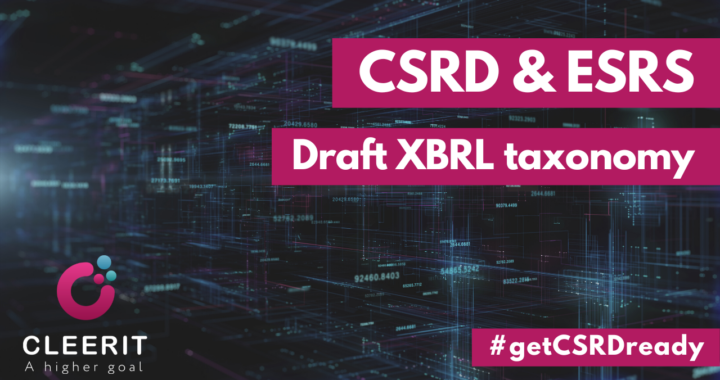Yesterday (10/1) EFRAG approved the release for a 60-day public consultation of the draft XBRL taxonomy of the ESRS, including the Article 8 digital taxonomy.
After this consultation period, it plans to issue its final advice in the second half of 2024 in the form of a technical recommendation to the European Commission.
The European Securities and Markets Authority (ESMA) is responsible for developing the draft Regulatory Technical Standards (RTS) on ESEF, that regulates the implementation (i.e. timing, level of tagging) and relies on the taxonomy prepared by EFRAG.
ESMA will also consult on the final digitalisation rules and effective date.
The EU legal process then requires that EC shall adopt a delegated act [RTS] as an amendment of ESEF regulation (Reg. 2019/815 UE) on the basis of the [Draft] RTS proposed by ESMA.
This means that we will not have the formal XBRL rules for yet some time, but we have the working assumptions in the meantime.
If you use Cleerit ESG to prepare your ESRS report you will be well prepared, as the digital templates are based on these working assumptions.
The ESRS digital taxonomy reflects the human-readable version of the ESRS, and includes a set of individual tags to translate in digital requirements the content of ESRS.
The Draft ESRS XBRL Taxonomy can be explored with an XBRL software, or with the Excel file that provides a human-readable illustration.
However, the Excel file will not be used itself to digitally tag ESRS reports. CSRD requires digitalisation of sustainability reporting.
While tagging of quantitative monetary and non-monetary data points is straightforward, designing the optimal tagging for the narrative disclosures requires more attention.
It is worth noting that, differently from financial reporting, where narrative information in most of the cases accompanies and provides context to a quantitative data point, in sustainability reporting narrative statements are in most cases not explanatory of quantitative information, but they are qualitative data points themselves.
And the majority of the data points in ESRS are narrative, so learning to collect, “consolidate” and manage narrative disclosures will be necessary.
An important part of the ESRS taxonomy are the many “Boolean” XBRL elements, used for questions requiring a positive or negative confirmation (the “whether” in the “whether and how” questions).
The boolean gives the advantage to convert the statement into Yes or Not instead of narrative textblock disclosure. This also makes it easy to construct standardized ratings to compare company performance.
If you are not yet ready to manage digital ESRS reporting, you are welcome to contact us to book a demo.
Source: https://efrag.org/Meetings/2311031439057869/EFRAG-SRB-meeting-10-January-2024-?AspxAutoDetectCookieSupport=1
